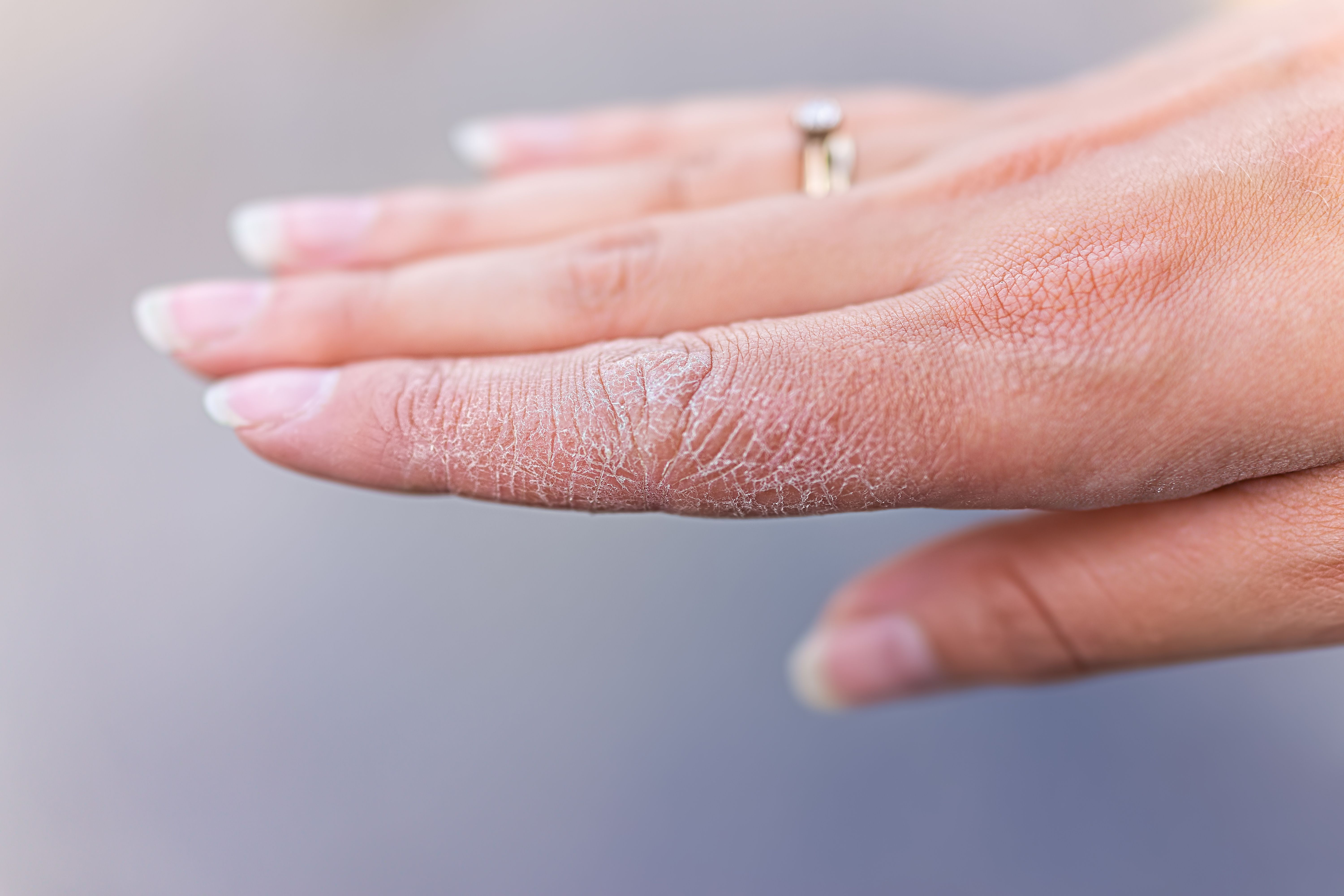- Acne
- Actinic Keratosis
- Aesthetics
- Alopecia
- Atopic Dermatitis
- Buy-and-Bill
- COVID-19
- Case-Based Roundtable
- Chronic Hand Eczema
- Chronic Spontaneous Urticaria
- Drug Watch
- Eczema
- General Dermatology
- Hidradenitis Suppurativa
- Melasma
- NP and PA
- Pediatric Dermatology
- Pigmentary Disorders
- Practice Management
- Precision Medicine and Biologics
- Prurigo Nodularis
- Psoriasis
- Psoriatic Arthritis
- Rare Disease
- Rosacea
- Skin Cancer
- Vitiligo
- Wound Care
Article
Lebrikizumab Efficacious in Clearing Hand, Facial Atopic Dermatitis
Author(s):
In 3 phase 3 clinical trials, the drug demonstrated significant improvements of AD when compared to a placebo.
Lebrikizumab effectively cleared atopic dermatitis in both hand and facial regions of patients with moderate-to-severe disease, according to late-breaking research presented at the Revolutionizing Atopic Dermatitis conference in Washington, DC.1
Andriy Blokhin/AdobeStock

Researchers sought to determine the efficacy of the drug in treating atopic dermatitis specific to the face and hands, citing a lack of research and understanding of lebrikizumab’s efficacy in difficult-to-treat regions.
They conducted 3 phase 3 clinical trials: ADvocate1, ADvocate2, and ADhere. In the ADvocate1 and ADvocate2 trials, participants received 250 mg of lebrikizumab or a placebo every 2 weeks for a total duration of 16 weeks of monotherapy. The ADhere trial compared treatment with lebrikizumab every 2 weeks combined with a low-to-mid potency topical corticosteroid (TCS) or placebo, again for a period of 16 weeks.
In all 3 trials, researchers frequently assessed participants for the presence of atopic dermatitis throughout the 16 weeks of analysis. In patients presenting with atopic dermatitis in their face or hands at baseline, researchers assessed the overall change from baseline at 16 weeks. Participant improvement was labeled cleared, improved, no change, or worsened.
By week 16, 61.9% of patients receiving lebrikizumab in the ADvocate1 trial had cleared or improved atopic dermatitis of the face, compared to 31.6% of patients in the placebo group. For patients with atopic dermatitis impacting their hands, 67.2% of patients being treated with lebrikizumab saw improvement or clearance, compared to 29.1% of placebo group members.
In the ADvocate2 trial, 57.5% of participants in the lebrikizumab treatment group saw improvement or clearance, compared to 21.7% in the placebo group, as it relates to facial atopic dermatitis. With respect to atopic dermatitis impacting the hands, 61.7% of patients receiving lebrikizumab had improved or experienced clearance, while 18.9% had in the placebo group.
In the ADhere trial, 68.6% of patients receiving combination lebrikizumab and TCS treatment had improved or cleared facial atopic dermatitis, compared to 46.2% of patients in the placebo group. 72.8% of patients with hand atopic dermatitis who had been treated with combination therapy saw improvement or clearance, compared to 43.2% of placebo-treated patients.
"At week 16, lebrikizumab was efficacious in clearing and improving facial and hand dermatitis in these burdensome, very difficult to treat areas, very important 2 areas," said Jenny Murase, MD, lead author of the study and late-breaking research presenter.
Reference
- Murase J, Chovatiya R, Strowd L, Thyssen J, et al. Improved and cleared facial and hand dermatitis with lebrikizumab in patients with moderate-to-severe atopic dermatitis. Late-breaking research presented at: 2023 Revolutionizing Atopic Dermatitis Conference; April 29-May 1, 2023; Washington, DC. https://djbpnesxepydt.cloudfront.net/radv/April2023/April-2023-Posters/381_Poster_Lebrikizumab_Face-and-Hand-Improvement_Murase_1682462760665.PDF
Newsletter
Like what you’re reading? Subscribe to Dermatology Times for weekly updates on therapies, innovations, and real-world practice tips.











